Homemade Polenta
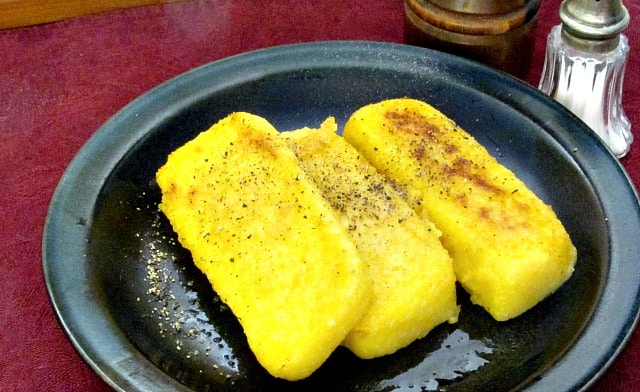
When I started using whole grains exclusively, I found the shelf stable packages of polenta sold at the supermarket to be a very convenient food – whole grain but even faster than cooking pasta. I could just slice and microwave it! And then, when I also went off gluten, it was even more valuable. I always have a package on the shelf.
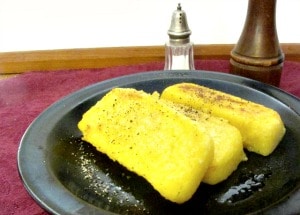
But it does cost more than the old wheat pasta did (though still less than much gluten free pasta) and it does have some preservatives. I don’t really want it to be a staple in my kitchen. Besides, I know that polenta is pretty easy to cook. I can make just enough for a meal. Served at once, it is the mamaliga that was served at almost every meal when I traveled in Romania, very like grits in the American South. But if you let it cool, it sets up quite firmly, just like the polenta in the package, ready to heat and eat. Or you can pop slices in a bag, so they doesn’t take too much room, and freeze them. I finally started to make larger batches to have the convenience of microwaving.
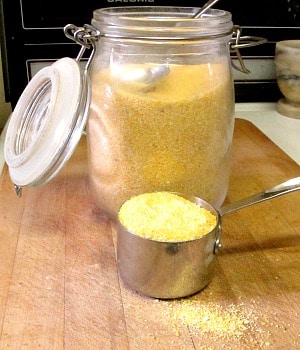
Start with the corn. A somewhat coarser corn is ideal, but it does not have to be labeled as Polenta. For baking, I use a stoneground cornmeal that is really a flour. I could use that, but it would be annoying to cook it without lumps, so I don’t. I have in the past bought a very coarse grind from a farmer at Greenmarket. I had to make it ahead and let it set, as that softened the corn – if I just cooked it and tried to serve it at once, it was too gritty to eat. (This is an issue with corn, which is much harder than wheat, and cannot be handled the same way.) Something in between, which may (or may not) be labeled as polenta, or as grits, works well.
Use a pot that is larger than you think you will need – the stuff spits and spatters. And take out something to mold it in. I like a loaf pan, because then it is easy to slice evenly.
Mix one cup of coarsely ground corn with two cups of water until completely mixed in and smooth. Then add another two cups of water. You can do it all at once, but I find this method easier. Add the salt.
Now bring it to a boil, while stirring. This part is key – as it comes to a boil, the corn sort of blooms. If you don’t stir, it can settle and get lumpy, but stirring prevents that. You will see the change. One minute, you have a pot of water with wet corn that rises and swirls as you stir, the next you have a pot of yellow liquid, with the corn completely suspended in the water. (Remember high school science, and the difference between a solution and a suspension? Corn does not dissolve, but as it cooks it does suspend.)

When it comes to a boil, lower the light, and let it simmer for half an hour, stirring every five minutes. I know you think polenta is difficult because we’ve all heard stories about Italian Nonnas stirring the pot constantly for hours. We really don’t have to do that. (Nonna probably had corn too coarse to easily cook soft, and no way to keep the cooked product for a full day or more to soften.)
Do stir every five minutes, though, so that it doesn’t settle and lump, and does cook evenly. As the polenta thickens, it will start to go into boiling lava mode. You can see in one of the pictures the little “crater” where a bubble of steam has come to the surface. Stirring keeps that from getting too bad, but be careful, it still can spit at you. The goal is to cause the starch to gelatinize, so that when it cools it all gloms together firmly. The long slow cooking with stirring causes that to happen evenly. I often do this when another job keeps me in the kitchen – it’s not a big deal if I’m also washing and chopping vegetables, mixing a meatloaf, or any other task that I can easily pause to stir the corn.
Now, as always, the exact timing will vary – the grind of your corn, the heat of your stove on Low all affect it. Once you have a soft mass that will mound, but then settles back down, you’re probably done. If you want, you can eat it now, or eat some right away and save the rest. Pour it immediately into your loaf pan or other bowl. (You do not need to grease it.) It will start to set as soon as it starts to cool.. Do not eat some and leave the leftovers in the pan to deal with later – ask me how I know…
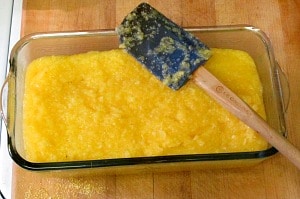
But then just leave the loaf to cool. Once it is cooled, I usually cover it and refrigerate it to use the next day. If you want, you can use plastic wrap and press it down to touch the top of the polenta so it doesn’t dry – honestly I don’t bother, but if you have finicky eaters, or just want a fancier presentation, it may make sense.
As the polenta cools it contracts in the pan. After a few hours, it is completely cool, and will turn out easily (though I usually let it set overnight, in the fridge, to be sure.) At that point, you can wrap it as is and refrigerate it. I usually slice it for easier handling if I want to freeze it. Basically, you now have exactly what comes in the package, without additives. It is not shelf stable. You do need to keep it in the fridge, or freezer if you won’t use it in a few days.
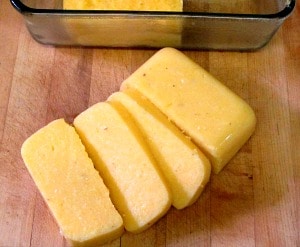
I cut two to three slices per serving. Usually I just microwave it – the whole idea is ease, speed, and convenience, after all. I do sometimes pan fry, and am more likely to do that if I’m serving it with food that does not have an actual sauce. Last week I pan fried a few slices, then served them with Italian sausage pan and greens – delicious. Or pan fry in butter, which will help it brown, and sprinkle a little Parmesan and pepper on top as a side dish with a plain meat. I gave measurements for four servings, but it can readily be increased (just make sure you use a large enough pan!) if that makes more sense for you.
And if you want something make-ahead and decorative for a dinner party, pour the hot polenta into custard cups, or even pretty little molds, and let it cool in them. Then simply microwave when you are ready to serve!
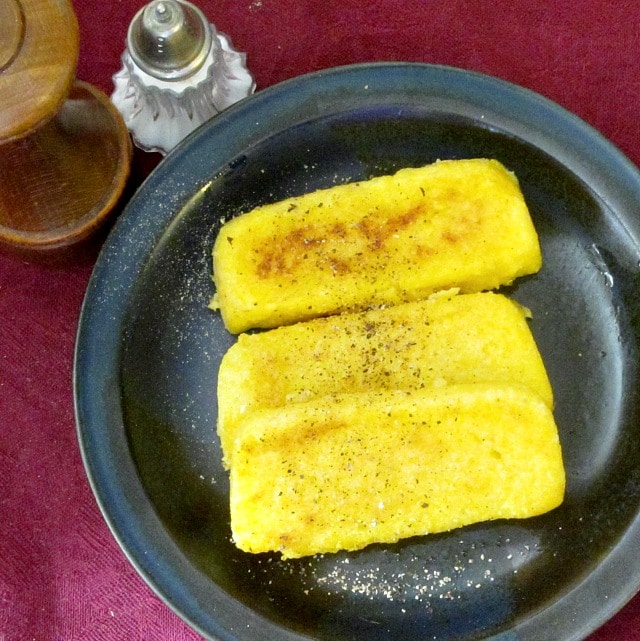
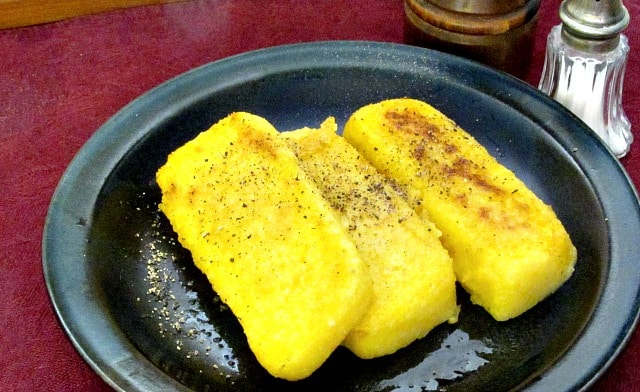
Homemade Polenta
Ingredients
- 1 c coarse ground cornmeal may be labeled polenta or grits, may not be
- 1 qt. water
- 1 t salt
Instructions
- Mix the cornmeal well with 2 cups of water, then add the rest of the water and salt.
- Bring to a boil, stirring constantly, until the cornmeal blooms and starts to thicken.
- Lower the heat, and simmer for half an hour, stirring every five minutes.
- At this point, you can eat it at once, if you wish.
- If you prefer to keep some or all for later use, pour it immediately into a loaf pan or bowl to cool. As it cools, it will set. Once it cools, refrigerate.
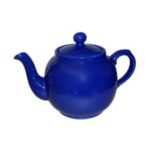
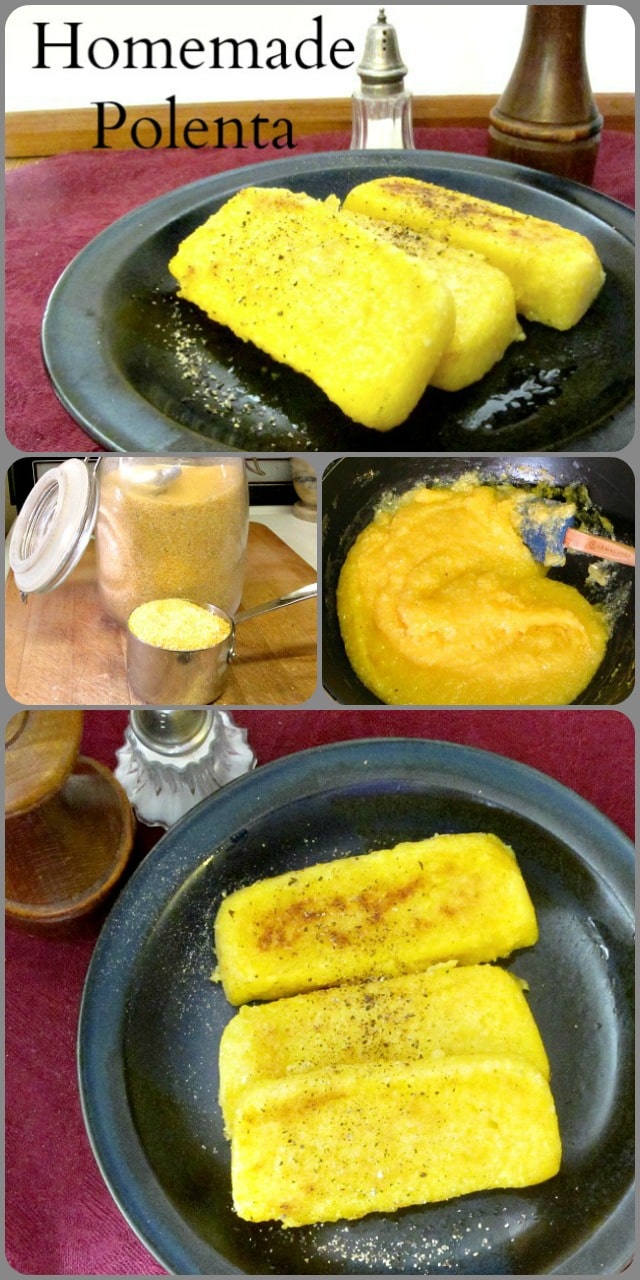
when u eat it immediately, its cornmeal mush, add a couple eggs twds the end and redhot with the butter when u eat it.
when u take take mush n chill it, u can have fried mush the next day.
always cracks me up to hear ppl talk bout polenta when we’ve had mush in this country for several centuries. including the molded version 🙂
it is delicious, huh
We sometimes forget how regional food is in this country. Living in the Northeast, I have never in my life been served something called Mush, though I have heard of it. I have eaten grits – and I’m still not at all clear what the difference between grits and mush is… (Polenta appears to be cooked longer than grits, which makes it less, well, gritty…) And I have lived in heavily Italian neighborhoods. Most of my friends, and local restaurants, served pasta more than polenta (or risotto, for that matter – Italian food is also regional) but I have eaten both.
In another comment you’d mentioned your family making cornbread and biscuits all the time, but regarding loaf bread as a luxury. In my family – including those on farms – cornbread was a bit of a treat, and biscuits meant you were really fussing, but women for generations (right down to me) baked loaves of bread every week. High gluten white flour was cheap (and not very good for biscuits,) cornmeal was more expensive. In the South, it’s the other way around.
Anything I write about mush or fried mush might be mistaken. It seemed wiser to let it slide than to mislead anyone… But thank you for mentioning it. Among other things, it’s a reminder that this is not limited to Italian food – I’m going to serve polenta/mush/whatever you want to call it with seasoned pintos, with eggs, with anything where I need a fast whole grain.
I grew up in NYS with yankee-new england heritage on my moms side. my dads from nc. my moms family made mush and fried mush. (scrapple too as well as other breakfast foods) —as a side note:my dads family ate oatmeal e.v.e.r.y. single day. he didnt want me serving my kids it as he said he ate enough for his grandchildren to never have to eat it.
grits are very different. a different grind. grits or polenta are more a cracked grain and mush is from cornmeal. i love grits with butter, no sugar and milk for this girl. polenta to me is honestly just grits. but i like white grits and polenta is yellow, there is a diff taste. i buy yellow grits just to get the undegerminated.
my older yankee relatives ate johnny cakes which is cornmeal pancakes. they had cornbread quite a bit too. i dont think biscuits were a rarity with them either but theyd be rolled out and cut, unlike my southern gma’s drop or hand rolled. i rly dont think she made loaf bread, only bought it.
beans cooked with hamhocks or pork of some type, greens and organic (nonGMO) fried mush…even for this raging carnivore, is a divine meal.
So, by your description, mush is the finer grind, grits is (like polenta) the coarser grind, and yellow rather than white corn. (And what I’ve seen suggests that polenta is cooked longer than grits, but I can’t speak authoritatively.)
I guess the New England in your background (combined with Southern…) I had one grandmother here in New York City, where she’d been born, a great aunt down the Shore in New Jersey (the farms were all gone by the time I remember, though one elderly cousin still had the farmhouse she grew up in until I was in my 20s – and still kept chickens, when I was little.) My other grandmother was in Central NY, Syracuse area. Dairy country, though she was urban.
And no mush, we made cornbread but not often, biscuits were rare (but shortcake had to be biscuits, none of that spongecake nonsense! I remember my Syracuse grandmother quizzing poor confused waitresses in peach season.) By the time I remember everyone bought loaf bread, though I have my great grandmother’s recipe for salt rising bread. We all certainly did eat oatmeal, though! LOL
I’m always fascinated by conversations like this – who did what, who ate what… We all assume that what we grew up with is the default, but it can be so different.
grits are generally white. AND degerminated, like making white flour from wholegrain. the only undegerminated i can find is yellow. which would be fine for polenta but for grits, its a sacrifice i make to have wholegrain grits. i do sneak sum white grits a couple times a yr. im in rochester area myself. we make baking powder biscuits (my northern greatgma’s recipe) for shortcake altho the gross spongecake sells in the stores…yuck. im with ur gma lol my mom did not bake much and gladly handed it to me altogether by age 10. she made the kris kringle cookies at cmas time tho lol my family did not make bread, except for quick breads at holidays. i started making bread in high school. ground my own grain since 1995ish. have a dough kneader (wholegrain even) that is worth every penny but before that i had gotten to 6 loaves at one time i cud knead. taught my son n oldest dd and he got up to 6 loaves too. it was hard for me to do 6 and i didnt do it very long before getting the kitchen center with dough hook. i dont do biscuits like ever but it was impressive how fast my gma cud whip up a biiiiig batch. she had 10 kids. should make cornbrd more. i have a recipe that uses lots of cornmeal, not mostly flour with sum corn.
I think you’re going to like reading Inhabited Kitchen… LOL All whole grain, an emphasis on fresh homemade food – and easy ways to make that food, for those of us who don’t have time or energy to spare.
I baked bread until I had to go off gluten (now my quest is for a recipe for gluten free bread I’m willing to eat, having been used to my own 100% whole wheat homebaked bread.) I am determined.
I have never made polenta at home, but I did try it few times in my life. Love the taste! It’s not so popular here in Europe, though 🙂
Depends on where in Europe, actually – the dish is Italian. And mamaliga is a classic Romanian dish that’s essentially the same (though I never saw it cooled and fried, just the soft just cooked version.)
Do try it!
Polenta is not really a staple in our household but since I have a gluten sensitivity I’ve looked at other options and have some polenta that I am going to try with your recipe.
I understand! It was something I just made occasionally, until the switch to all whole grain… and never ate frequently until I had to go off gluten myself. But now, it’s just so handy! Definitely try it!
We love making polenta fries, but I have never made polenta myself. I need to give that a try!
Oh, do try! If you make it yourself, you can chill it in whatever shape is most convenient for cutting into fries – you might wand a shallow baking dish, for instance, instead of the loaf pan I used. Enjoy it!
I could never turn down a bowl, slice of polenta. This feeds my soul!
Serious comfort food!
I love polenta! I never make it often enough!
I was putting it off for two of us, until I realized that it’s perfect as a Make Ahead – I did this and got two dinners out of it. (I have even made larger batches, when I wanted something easy and fast to keep in the freezer.) We eat it much more now…
So many great tips and really great information on polenta…I never knew there was so much variety!
I never thought to cool the polenta in a loaf pan! That makes perfect slices.
I love polenta. It’s a staple here in Northern Italy and we eat it quite a lot. Those polenta slices can be grilled even on the BBQ. I’ve never made the ‘loaf’ myself. We buy the slices ready but I think I should do it! Thanks for the inspiration!
I am excited to try and make the loaf of polenta. Last summer I had it in a cafe and it was a slice of polenta with a ricotta mushroom sauce served over it. It was delicious and I want to recreate it and serve .
That sounds delicious! I hope you enjoy it.